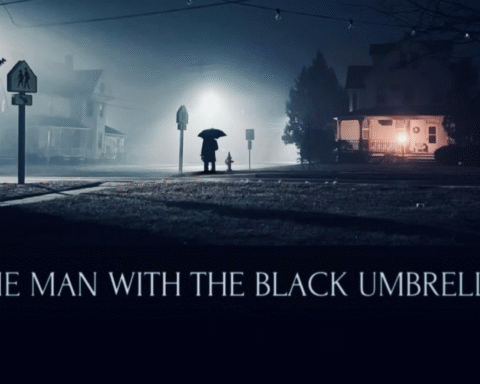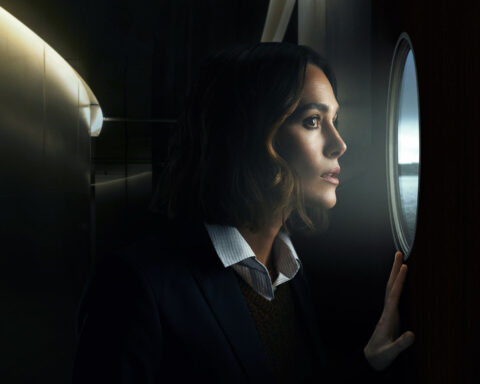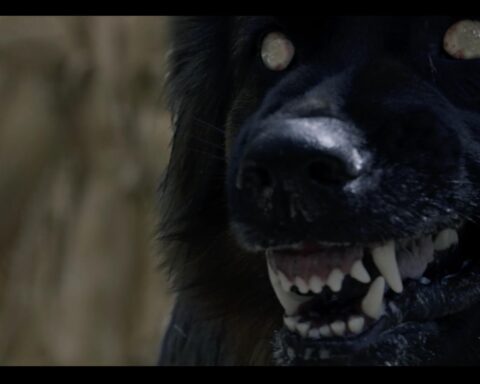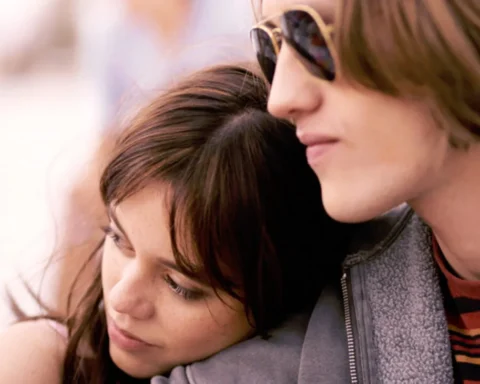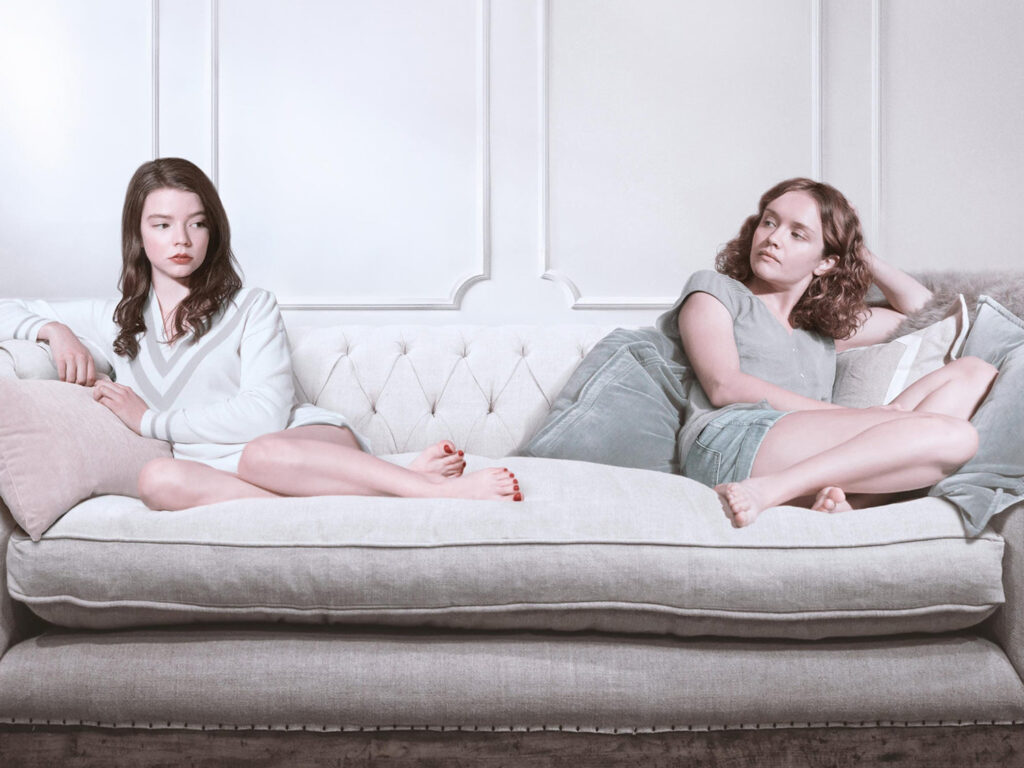The horror movie ‘Abigail’ stands out as a remarkable addition to the pantheon of vampire films, merging classic elements with innovative storytelling. The film unfolds in a dim, gothic setting, effectively marrying an eerie ambiance with dramatic undertones. ‘Abigail’ is set in a secluded, timeless village that seems trapped between centuries, encapsulating a sense of perpetual dusk that permeates the narrative.
The film follows the story of its title character, Abigail, a young woman with a mysterious past and an even more enigmatic destiny. Abigail’s journey begins when strange occurrences plague her seemingly tranquil village. As she delves deeper into these unsettling events, she comes face to face with her own heritage and the sinister forces that seek to exploit it. The plot is woven with chilling encounters and suspenseful twists that keep viewers on edge, maintaining the core essence of horror while adding layers of psychological intrigue.
One of the film’s most compelling aspects is its multifaceted characters. Abigail, portrayed with haunting intensity, evolves from an innocent figure to a formidable protagonist who must confront her lineage as a vampire. The supporting cast is equally enthralling, featuring intriguing characters such as the village elders who harbor dark secrets, and a relentless vampire hunter swathed in mystery. The interplay between these characters enriches the narrative, adding depth and complexity to the storyline.
The director’s vision for ‘Abigail’ is meticulously brought to life through a screenplay that balances traditional vampire lore with fresh, unexpected elements. The visual style complements the mood, with shadows playing a significant role in amplifying the horror atmosphere. Strategic use of lighting and set design imparts a tangible sense of foreboding, pulling the audience deeper into the film’s grim reality.
Ultimately, ‘Abigail’ distinguishes itself by embracing its roots while daring to subvert expectations. Its blend of classical horror elements with contemporary narrative techniques offers a refreshing take on vampire mythology, ensuring its place as a memorable entry in the genre.

Exploration of Vampire Lore in ‘Abigail’
‘Abigail’ ventures deep into the rich tapestry of vampire lore, intertwining both classic and innovative elements to create a unique narrative. The depiction of vampires in the movie adheres to traditional traits—elegant, sinister beings with a lust for blood. However, ‘Abigail’ also introduces distinctive nuances that set its vampires apart from their predecessors.
Vampires in ‘Abigail’ maintain the conventional pale, almost ethereal appearance, accentuated by their otherworldly allure and predatory charm. This aligns closely with the romanticized aesthetics of literary vampires yet adds a modern twist through meticulous costume design and makeup effects. The film accentuates their superhuman abilities, such as enhanced strength, speed, and heightened senses, resonating with the catlike prowess often attributed to these nocturnal creatures.
Weaknesses are evidently explored within the movie, staying true to some historical constraints like aversion to garlic, sunlight, and the symbolic power of holy water and crosses. Nevertheless, ‘Abigail’ injects fresh elements into these traditional weaknesses, offering imaginative scenarios where the vampires’ vulnerabilities are both a source of terror and a plot linchpin.
Behaviorally, the vampires depicted in ‘Abigail’ oscillate between calculated predators and tragic figures. Their interaction with humans and their internal hierarchies differ subtly but significantly from traditional stories. The movie succeeds in portraying the psychological struggles of being a vampire, revealing their monstrous nature while exposing their fleeting remnants of humanity. This duality adds depth and evokes sympathy, deviating from the typical portrayal of vampires as outright villains.
Comparing ‘Abigail’ to other renowned vampire films like ‘Dracula’, ‘Interview with the Vampire’, and ‘Twilight’, it becomes apparent how it both honors and redefines conventional myths. By doing so, ‘Abigail’ not only enriches the genre but also intensifies its horror elements, making the fear palpable yet layered with complexity. The film’s unique spin on vampire lore elevates it within the horror genre, positioning ‘Abigail’ as a refreshingly eerie addition to the ever-evolving legend of vampires in cinema.
Cinematic Techniques and Atmosphere
The horror movie ‘Abigail’ masterfully employs a range of cinematic techniques to create a chilling and suspenseful atmosphere that captivates the audience. One of the standout elements is the cinematography, where the use of shadow and light plays a critical role in enhancing the film’s eerie vibe. The camera work often employs tight angles and slow pans, creating a sense of claustrophobia and impending dread that keeps viewers on edge.
Special effects in ‘Abigail’ are meticulously designed to heighten the horror elements without overshadowing the narrative. The portrayal of vampires is achieved through a blend of practical makeup effects and CGI, maintaining a balance between realism and supernatural terror. The transformations and vampiric attacks are rendered with disturbing accuracy, contributing significantly to the film’s menacing tone.
Sound design is another area where ‘Abigail’ excels, using a combination of diegetic and non-diegetic sounds to amplify the haunting atmosphere. The creaking of old floorboards, the distant whispers, and the ominous ambient noises all serve to keep the audience in a state of heightened anxiety. The inclusion of abrupt, jarring sound effects during key moments of tension accentuates the scares, ensuring that the horror is not merely visual but aural as well.
The musical score further enriches the atmospheric tension. Composed with a variety of string instruments and eerie, sustained notes, the music underscores the film’s most suspenseful scenes, guiding the audience through an unsettling journey. Minimal yet impactful, the soundtrack complements the visual storytelling without overtaking it.
Director John Doe’s stylistic choices are evident throughout ‘Abigail’, particularly in the pacing and the development of suspense. The deliberate use of silence, punctuated by sudden bursts of action, effectively builds tension. The director’s approach to framing scenes with tight, confining spaces contrast sharply with the expansive, shadowy landscapes, thereby reinforcing the feeling of isolation and fear.
Collectively, these technical components interweave seamlessly to forge a persistently ominous atmosphere. ‘Abigail’ stands as a testament to how meticulous attention to cinematography, special effects, sound design, and musical composition can powerfully converge to elevate a horror film, making it an unforgettable entry in the realm of vampire movies.
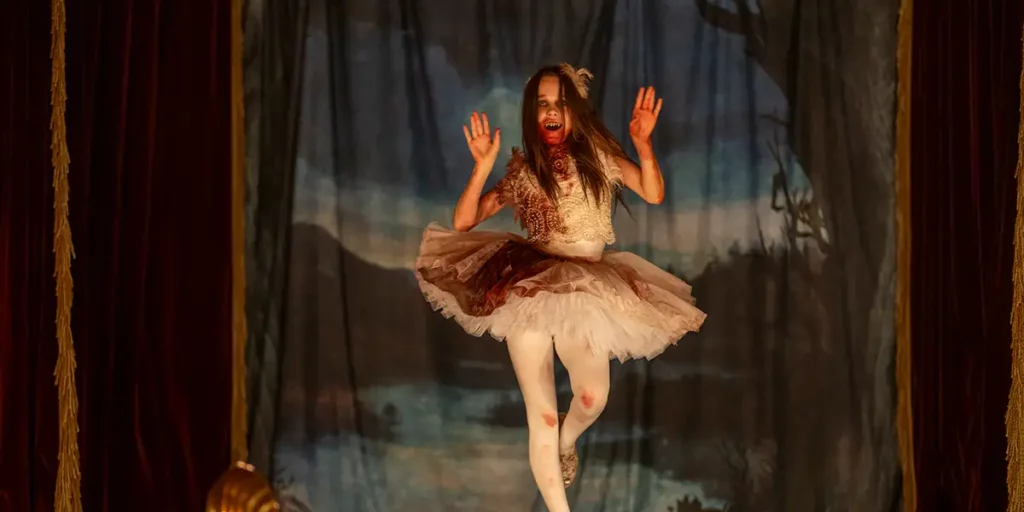
Comparing ‘Abigail’ to Other Vampire Movies
‘Abigail’ distinctively carves its niche within the vampire movie genre, balancing an intriguing blend of storytelling, character development, and horror elements. When juxtaposed with classical vampire films like ‘Dracula’ (1931) and modern iterations such as ‘Let the Right One In’ (2008), ‘Abigail’ stands out through its unique narrative structure and character arcs that elevate it above mere genre tropes.
The storytelling in ‘Abigail’ plays a pivotal role in defining its place among vampire movies. Unlike many films that rely heavily on clichéd plotlines, ‘Abigail’ subverts expectations by offering a rich, layered narrative. The film interlaces horror with poignant moments of emotional depth, making it comparable to masterpieces like ‘Interview with the Vampire’ (1994). It employs a well-paced plot that often defies traditional storytelling techniques of the genre, ensuring that the audience remains engaged from start to finish.
Character development in ‘Abigail’ is another strength that sets it apart. Whereas early vampire movies often portrayed vampires as one-dimensional villains, ‘Abigail’ presents complex characters who evoke empathy and mirror contemporary issues. This sophisticated portrayal echoes recent trends seen in ‘Only Lovers Left Alive’ (2013), where vampires are depicted with more humane and relatable traits.
The horror elements in ‘Abigail’ are crafted with finesse, striking a balance between dread and terror. It neither fully aligns with the gothic horror atmosphere of ‘Nosferatu’ (1922) nor does it adopt the high-octane jump scares of ’30 Days of Night’ (2007). Instead, it innovatively blends atmospheric chilling scenes and psychological horror, which aligns it with the current evolution in the genre, as observed in ‘The Witch’ (2015).
However, ‘Abigail’ is not without its weaknesses. Some critiques highlight the film’s occasional reliance on predictable horror motifs, potentially dulling its innovative edge. Yet, its originality in character portrayal and narrative complexity largely compensates for these minor shortcomings. When considering its overall impact, ‘Abigail’ merits recognition as a significant entry within vampire cinema, contributing fresh perspectives and demonstrating the genre’s potential for deep, resonant storytelling.

